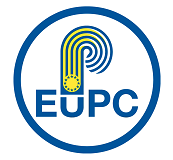2018
Plastic carrier bags are not so bad
An independent study of the life cycle of shopping bags for materials determines that plastics prove to be the material with the lowest total environmental impact.
On March 14, 2018, the Danish Environmental Protection Agency (Miljøstyrelsen) published a study analyzing the environmental impact of life cycle in the production, use and disposal of grocery shopping bags currently available in Danish supermarkets. The aim of the study was to identify the bags with the best environmental parameters, the recommended number of re-use and the best option to dispose of the shopping bag.
7 materials (LDPE, PP, rPET, polyester, biopolymer, paper, cotton and composite) and their variants were analyzed in accordance with international standards ISO 14040 and 14044 in the scope of recommended environmental impacts, taking into account various life cycle options: combustion, recycling and re-use as a waste bag before burning. For all variants, bag assessment has taken into account the impact from production in Europe, transport to Denmark, use and disposal process that could occur in Denmark or Europe.
The main conclusion of the analysis is that for production and disposal, lightweight LDPE shopping bags provide the lowest overall environmental impact for most environmental indicators when reuse is not considered. In particular, between the types of bags available, LDPE bags with a rigid handle are most preferred. The effects of littering for this type of bag were considered to be negligible for Denmark.
What's more, another important conclusion was about the best disposal option, and the study states that "reusing a bag as a waste bag is better than simply throwing it away with selective waste and is better than recycling." Recycling can potentially benefit heavy plastic bags such as PP, PET and polyester. Reuse as a waste bag is most suitable for lightweight shopping bags, such as LDPE, paper and biopolymer. "
EuPF (European Association of PE / PP Foil Producers) welcomes this analysis, which is also based on the analysis of the European Commission's assessment of the impact of options to reduce the use of disposable plastic shopping bags from 2011, and also uses existing methods used by the European scientific community to investigate the real impact of plastic packaging on the environment.
A full life cycle test is available in English at the following address : http://mst.dk/service/publikationer/publikationsarkiv/2018/mar/plastposer-lca/


